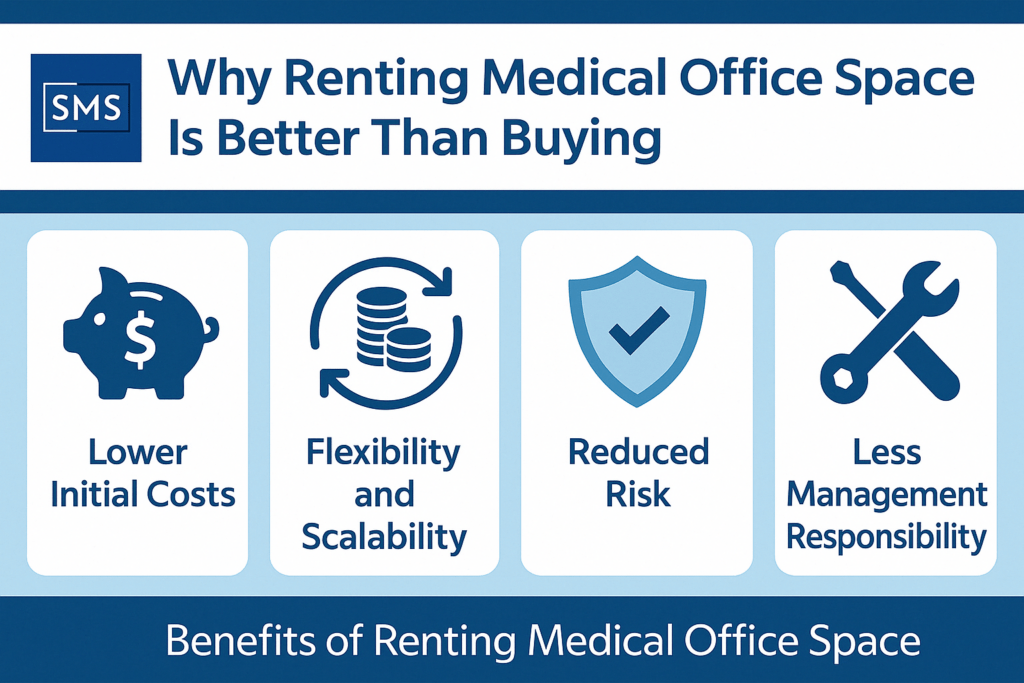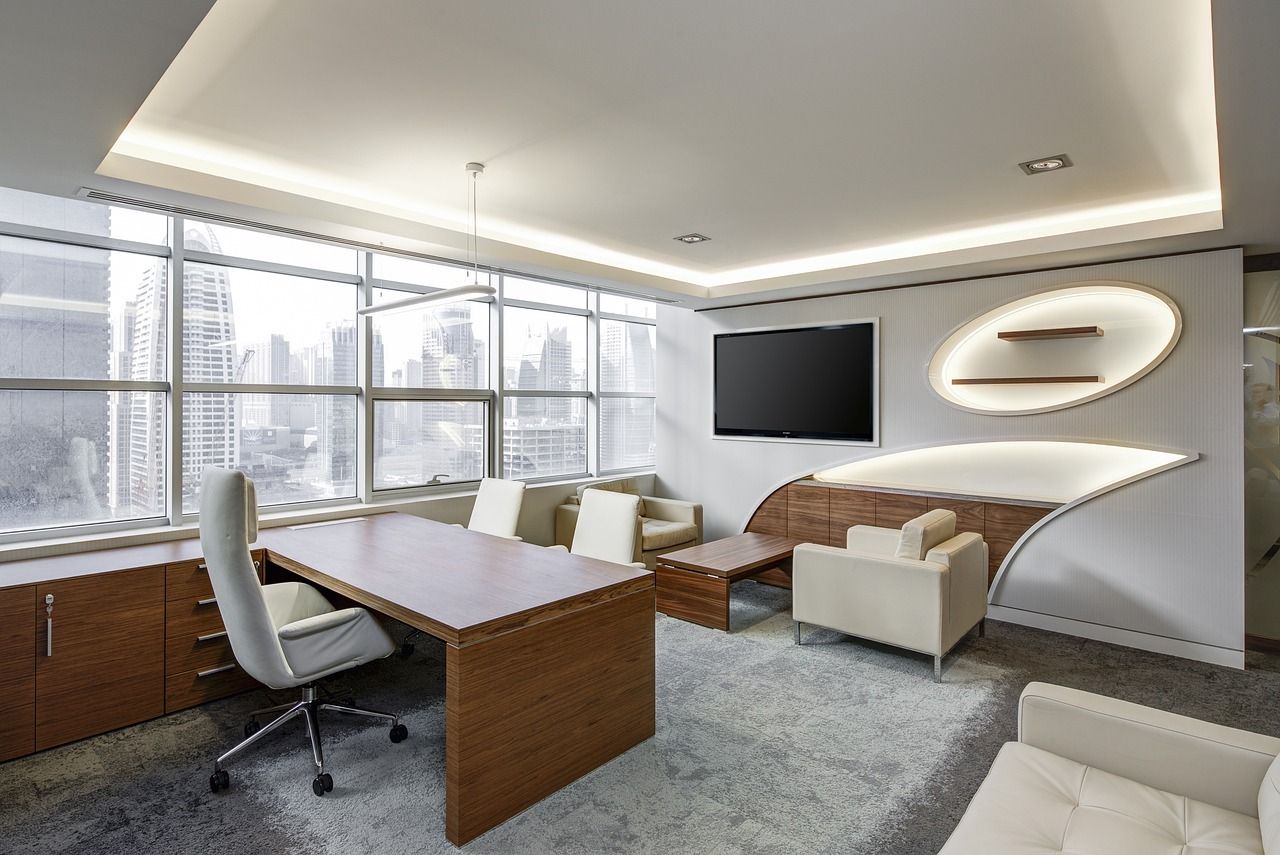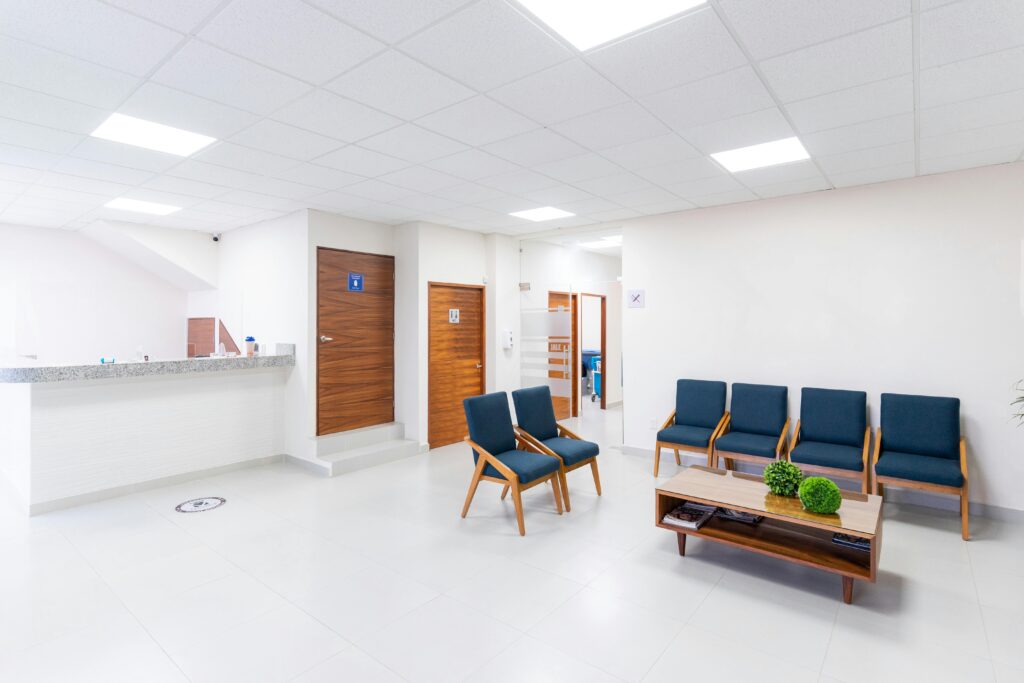How to Evaluate Medical Office Space for Your Practice’s Unique Needs
Finding the perfect medical office space isn’t just about location—it’s about matching your practice’s unique needs with the right space, amenities, and lease terms. This guide walks you through the essentials to make a confident leasing decision.
Why Choosing the Right Medical Office Space Can Make or Break Your Practice
Where you practice affects how you practice. For mid-career and established healthcare professionals, the layout, location, and lease terms of your medical office space influence everything from patient satisfaction to long-term viability. A smart leasing choice supports growth, stability, and efficiency—while the wrong one can create financial stress, limit flexibility, and impact your reputation.
Modern providers are looking beyond square footage. They want turnkey medical offices, thoughtfully designed for privacy, accessibility, and clinical efficiency. Whether you’re a cosmetic specialist offering injections or a family physician handling routine exams, the right medical office amenities streamline operations and elevate patient trust.
Understanding Your Practice’s Specific Space Requirements
Every specialty has distinct needs. A solo psychiatrist requires a different setup than a pediatrician. The size, flow, and privacy of your space directly affect your workflow.
Ask yourself:
- How many exam or consultation rooms do I need?
- Will I be seeing patients or using the space for administration?
- Do I need space for assistants or shared reception?
- What privacy and accessibility considerations apply?
Single-room offices work well for practitioners who need minimal setup—such as psychologists, dermatologists, and primary care physicians. Larger private medical suites may suit those expanding or managing higher patient volume. And if you’re growing, ask about multi-office leasing to accommodate future staff or collaborative partners.
Location, Location, Location: Why Miami Beach Near Mount Sinai Matters
Your office isn’t just where you work—it’s a point of contact for your entire professional network. Choosing a medical office space near Mount Sinai positions your practice close to Miami Beach’s busiest healthcare corridor. This proximity brings better access to hospital resources, referrals, and walk-in patient traffic.
In a dense urban area like Miami Beach, convenience is king. Look for spaces with:
- Accessible parking for patients and staff
- ADA-compliant building access
- Safe, well-lit surroundings
- Walkable routes from nearby neighborhoods or transit stops
Top-tier Miami Beach healthcare real estate gives your patients peace of mind. It reduces no-shows, shortens commutes, and positions you for stronger community presence.
Key Amenities and Features That Elevate Your Medical Office Experience
Once you’ve narrowed down the location, it’s time to evaluate the details that affect daily function.
Look for turnkey medical offices that include:
- Modern furnishings, exam tables, or desks
- Reliable internet and phone infrastructure
- Clean, well-maintained restrooms
- Privacy-enhancing soundproofing or entry layouts
- Shared waiting areas, if needed
These medical office amenities save time and money, especially for providers entering a new market or downsizing from a larger practice.
Lease Terms That Work for You: Flexibility and Security in One-Year Leases
Many physicians feel stuck between rigid long-term contracts and unpredictable month-to-month arrangements. That’s where flexible medical office leases shine. A one-year term gives you the confidence to build your practice without overcommitting financially.
When reviewing medical office lease terms, consider:
- Options to renew or upgrade if your practice grows
- Clarity around maintenance and utility responsibilities
- Freedom to personalize your space within medical guidelines
For specialists testing a new market, or mid-career professionals looking for lower-risk expansion, short-term leases allow greater adaptability.
Evaluating Building Quality and Management: What Sets a Space Apart
A beautiful office isn’t helpful if the plumbing fails or the Wi-Fi drops every afternoon. Don’t overlook the people and systems behind the walls.
A well-run medical office should offer:
- Prompt response to maintenance requests
- Professional and communicative property management
- Compliance with medical regulations
- Secure, clean facilities with appropriate signage
These factors influence how patients perceive your brand and whether you can operate without disruption.
Avoiding Common Pitfalls When Leasing Medical Office Space
Not all leases are created equal. Even seasoned practitioners can miss fine print that creates long-term headaches.
Before signing, make sure you:
- Check for hidden fees or CAM (common area maintenance) charges
- Confirm the space complies with HIPAA and medical waste regulations
- Understand parking access and usage limits
- Ask about after-hours building access and utilities
Use a checklist to track features and questions during tours. If needed, consult with a healthcare real estate expert who understands medical office rental tips and local market trends.
Making the Decision: How to Choose the Best Medical Office Space for Your Practice
Choosing an office is a business decision—but it’s also a reflection of your professional values. A well-chosen medical office space for specialists aligns with your work style, patient expectations, and long-term goals.
Here’s how to compare your options:
- Evaluate price vs. amenities
- Map locations in relation to your patient base
- Think about daily flow: check-in, treatment, checkout
- Review the landlord’s track record with medical tenants
- Ask other practitioners about their experience in the area
The right space simplifies your day, improves patient experience, and supports your goals as your practice evolves.
Secure Your Ideal Medical Office Space with Sheridan Medical Suites
If you’re looking for medical office space that’s flexible, modern, and built for healthcare professionals, Sheridan Medical Suites offers a smart solution. Their single-office spaces are located near Mount Sinai Hospital in Miami Beach, with flexible medical office leases, short-term contracts, and everything you need to get started fast.
With flexible pricing, Sheridan Medical Suites makes it easier for physicians to find the right space without a long-term commitment. Whether you’re an established provider or expanding into a new market, their private medical suites are move-in ready, fully equipped, and designed to meet real clinical needs.
To schedule a tour or consultation, call today or fill out the online form on their website. Your ideal medical office space in Miami Beach is closer than you think.










